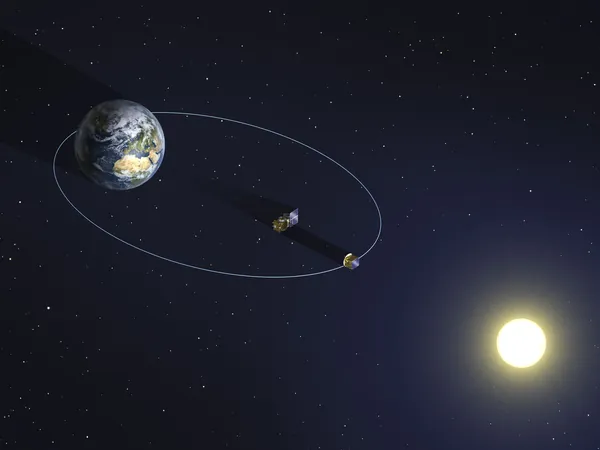
Breakthrough in Space: Proba-3's Stunning Formation Flying Success
2025-05-08
Author: Jia
A Historic Achievement in Space Technology
In a stunning first for aerospace engineering, two spacecraft have successfully flown in perfect formation at an astonishing millimeter precision—even managing to maintain their positions for hours without ground control intervention!
Introducing Proba-3: A Mission Like No Other
The European Space Agency's Proba-3 mission has set a new standard in space exploration. This innovative endeavor saw its two spacecraft—the Coronagraph and the Occulter—traveling 150 meters apart, acting as if they were a single giant spacecraft, making this the world's first precision formation flying mission.
A Team Effort Across Borders
Earlier this year, engineers from ESA and industry partners gathered at the European Space Security and Education Center in Belgium to hit a major milestone for the mission. Using advanced positioning instruments, they deftly aligned the two spacecraft and monitored their autonomous operation.
Cutting-Edge Technologies at Work
This ambitious mission is a showcase of pioneering technology, many of which were developed through ESA's General Support Technology Program. According to Esther Bastida Pertegaz, a Proba-3 systems engineer, "To accomplish something unprecedented, we needed to forge new paths in technology."
Flying High Above Earth
The spacecraft operate at altitudes of over 50,000 km, where the planet's gravitational pull is weak enough to minimize fuel consumption for maintaining their formation. However, the formation must be regularly reestablished in a cyclical dance during their orbits.
Unlocking the Secrets of the Sun
The ultimate goal? Aligning the spacecraft so that the Occulter's 1.4-meter disk casts a 5-centimeter shadow onto the Coronagraph's optical instrument, enabling unprecedented studies of the faint solar corona.
How Autonomy Takes Flight
The operation begins at the ground control center, where the team calculates the satellite positions. Once close enough, a Visual Based System takes over, using wide-angle cameras and LED lights for precise tracking. After that, narrow-angle cameras ensure pinpoint accuracy.
Precision Achieved Through Innovation
The breakthrough in precision formation flying came from two key advancements. The integration of a Fine Lateral and Longitudinal Sensor (FLLS), which uses laser beams for millimeter-accurate positioning, and a shadow position sensor algorithm that maintains the Coronagraph's position in the shadow cast by the Occulter.
Excitement Build Up as Mission Advances
With millimetric accuracy in range and sub-millimetric precision laterally, Proba-3's project manager, Damien Galano, eagerly anticipates the completion of instrument calibration and the first breathtaking images of the sun's corona.
A Collaborative Achievement in Space Exploration
Proba-3 is a collaboration led by ESA and includes contributions from Spain's Sener, alongside over 29 companies from 14 countries, with significant input from Redwire Space, Airbus Defense and Space, and others. The mission was launched on December 5, 2024, from India, marking a historic step forward in our quest to unlock the mysteries of the universe.



 Brasil (PT)
Brasil (PT)
 Canada (EN)
Canada (EN)
 Chile (ES)
Chile (ES)
 Česko (CS)
Česko (CS)
 대한민국 (KO)
대한민국 (KO)
 España (ES)
España (ES)
 France (FR)
France (FR)
 Hong Kong (EN)
Hong Kong (EN)
 Italia (IT)
Italia (IT)
 日本 (JA)
日本 (JA)
 Magyarország (HU)
Magyarország (HU)
 Norge (NO)
Norge (NO)
 Polska (PL)
Polska (PL)
 Schweiz (DE)
Schweiz (DE)
 Singapore (EN)
Singapore (EN)
 Sverige (SV)
Sverige (SV)
 Suomi (FI)
Suomi (FI)
 Türkiye (TR)
Türkiye (TR)
 الإمارات العربية المتحدة (AR)
الإمارات العربية المتحدة (AR)